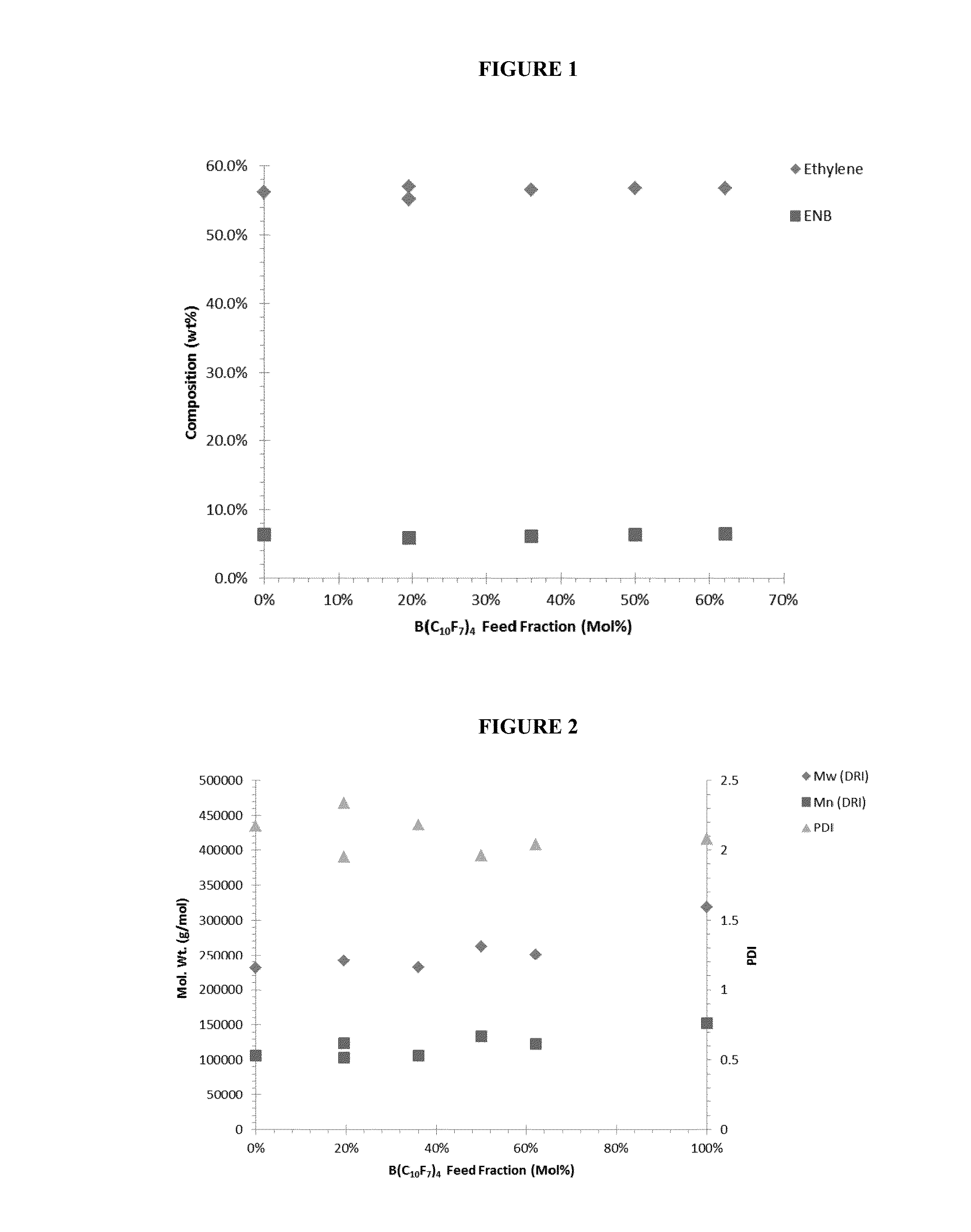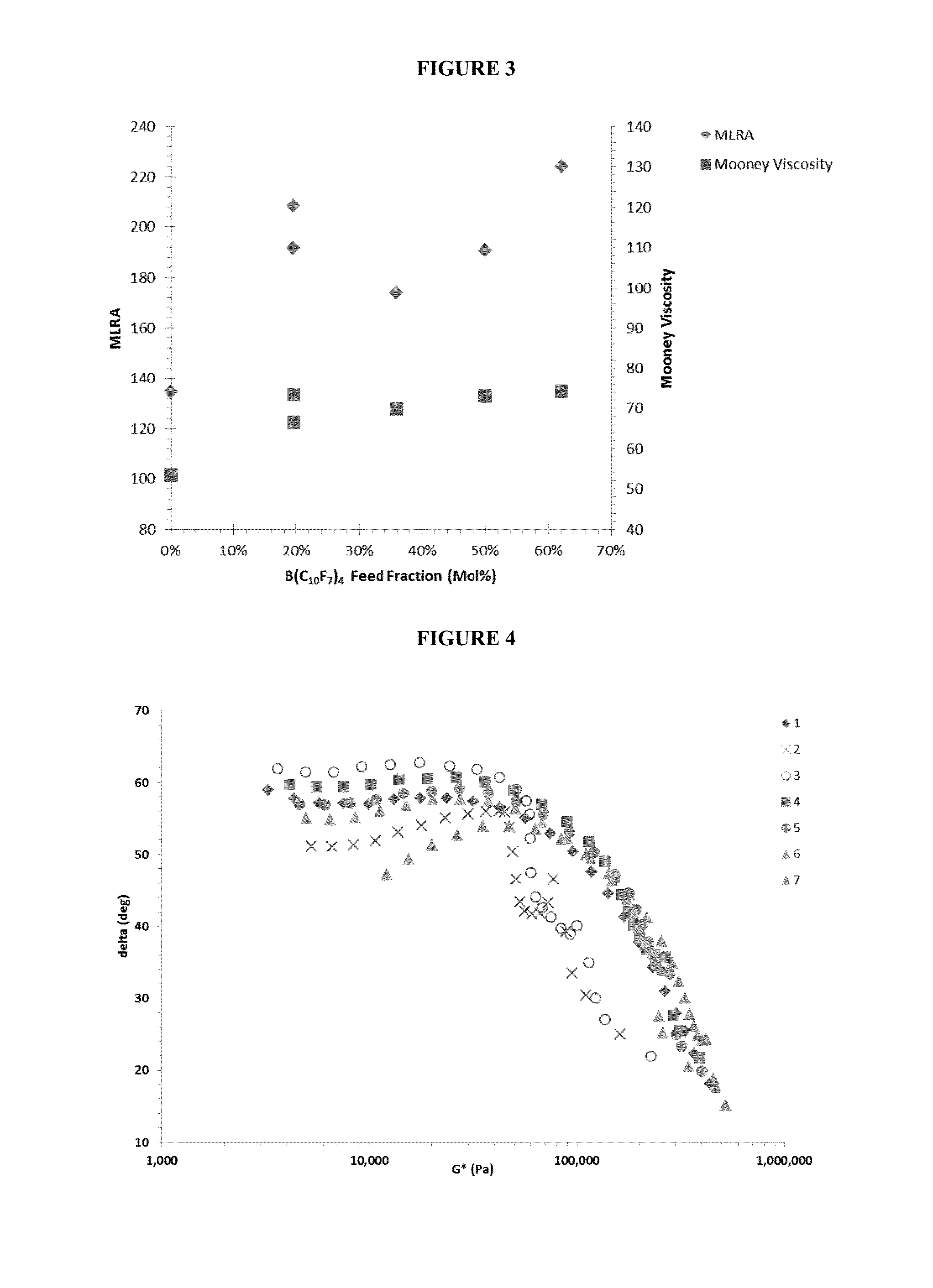Process to Produce Ethylene Propylene Copolymers
a technology of ethylene propylene and copolymer, applied in the field of new ethylene propylene monomer copolymer, can solve the problems of deterioration of heat resistance, difficulty in controlling the molecular structure of the copolymer, and occurrence of foreign matter or inhibition of vulcanization reaction,
- Summary
- Abstract
- Description
- Claims
- Application Information
AI Technical Summary
Benefits of technology
Problems solved by technology
Method used
Image
Examples
examples
[0280]All of the examples were run in a 1-liter, solution-phase continuous stirred tank reactor. The reactor temperature was controlled at 120° C. by metering a mixture of chilled water and steam to the reactor jacket, and reactor pressure was maintained near 320 psig (2206 kPa) by a back-pressure regulator on the effluent line downstream of the reactor. Raw materials (ethylene, propylene, isohexane, and toluene) were obtained from an integrated pipeline source. Isohexane and toluene were further purified by passing the material through a series of adsorbent columns containing either 3A mole or 13X mole sieves followed by treatment with alumina. Ethylene and propylene monomers were purified on-line by passing the feed streams through beds of 3A mole sieves. Diene monomers were purified by filtering through alumina prior to use.
[0281]Each of the monomer feeds was metered to a common mixing manifold by mass flow controllers (Brooks), and combined with isohexane solvent prior to enteri...
PUM
| Property | Measurement | Unit |
|---|---|---|
| Temperature | aaaaa | aaaaa |
| Temperature | aaaaa | aaaaa |
| Temperature | aaaaa | aaaaa |
Abstract
Description
Claims
Application Information
 Login to View More
Login to View More - R&D
- Intellectual Property
- Life Sciences
- Materials
- Tech Scout
- Unparalleled Data Quality
- Higher Quality Content
- 60% Fewer Hallucinations
Browse by: Latest US Patents, China's latest patents, Technical Efficacy Thesaurus, Application Domain, Technology Topic, Popular Technical Reports.
© 2025 PatSnap. All rights reserved.Legal|Privacy policy|Modern Slavery Act Transparency Statement|Sitemap|About US| Contact US: help@patsnap.com



